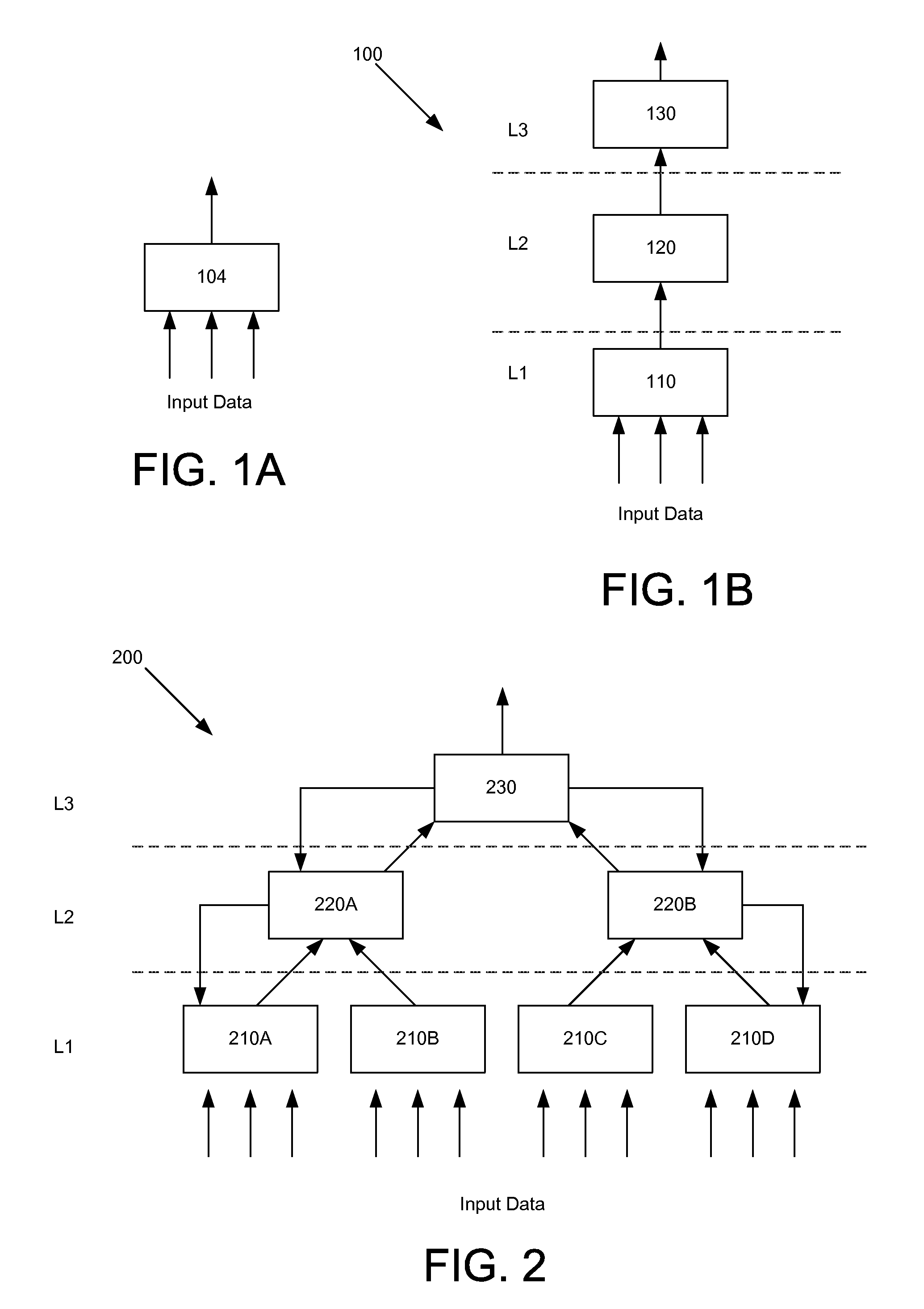Temporal memory using sparse distributed representation
- Summary
- Abstract
- Description
- Claims
- Application Information
AI Technical Summary
Benefits of technology
Problems solved by technology
Method used
Image
Examples
example operation
and Function of Cell
[0105]Sequence processor 314 performs temporal processing by selectively activating cells (and columns), and learning previous states of cell activations. As the learning at the cells progresses, the cells learn to anticipate spatial patterns in bottom-up input 328 and activate before corresponding spatial patterns appear in bottom-up input 328. After learning, the cells remain active for a longer time, producing more stable and invariant bottom-up output 314 to a parent node.
[0106]FIG. 7 is a diagram illustrating columns and output signals from the cells, according to one embodiment. Each circle in FIG. 7 represent a cell. When each cell becomes active, the cell sends out pooling output 622. An activated cell may also send out sequence output 714 to other cells to indicate its activation state. A basic idea behind implementing temporal processing is to have a learning cell, upon activation, detect activation states of other cells and store the activation states ...
PUM
 Login to View More
Login to View More Abstract
Description
Claims
Application Information
 Login to View More
Login to View More - R&D
- Intellectual Property
- Life Sciences
- Materials
- Tech Scout
- Unparalleled Data Quality
- Higher Quality Content
- 60% Fewer Hallucinations
Browse by: Latest US Patents, China's latest patents, Technical Efficacy Thesaurus, Application Domain, Technology Topic, Popular Technical Reports.
© 2025 PatSnap. All rights reserved.Legal|Privacy policy|Modern Slavery Act Transparency Statement|Sitemap|About US| Contact US: help@patsnap.com



